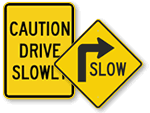Nobody likes traffic. Traffic was most likely imported from hell by the devil himself as a way to torment commuters and induce vehicular homicides.
OK, maybe not. Traffic actually rose to its frustrating heights on the back of urbanization; as more Americans began moving to cities and car-ownership rates expanded, traffic became the scourge of urban transportation that it is today.
But for as long as long as there’s been gridlock on the streets, urban planners and city administrators have been endeavoring to institute creative solutions to reduce traffic. The reversible lane, or more technically, the counterflow lane, is one such solution. Reversible lanes are street lanes on which traffic may travel in either direction, depending on the time of day and the traffic conditions. Usually, these reversible lanes are designed to ease rush hour traffic flows, so that they travel one way during the morning commute and the reverse direction during the afternoon commute. Reversible lanes are almost always accompanied by the installation of complicated street signs and hanging traffic lights. Though they are lauded for optimizing roadway efficiency and reducing the pain of early morning commuters (second only to Dunkin Donuts Iced Coffee in this category), reversible lanes have also come under fire for creating safety hazards and necessitating costly informational campaigns.


In the late 1970’s, Phoenix Arizona became one of the first cities to implement reversible lanes as a means of reducing traffic. In response to booming immigration into Phoenix and a 50% rise in car-ownership, Phoenix traffic engineers created reversible lanes on two heavily-travelled wide streets in 1978 and 1979. According to the May 1981 edition of American City & County, they saved money by installing a barricade and posting permanent signage in place of costly electronic signs, which are still quite expensive to maintain. Despite an initial spike in car accidents on these streets, reversible lanes proved to be a success; delays were reduced by 30% while average vehicle speeds increased by 4 miles per hour. The reversible lanes and signs that the Phoenix engineers erected on Seventh Avenue have remained in place to this day.
These days, reversible lanes (and their important accompanying signs) can be found on the busiest streets of many of the biggest cities in the U.S. From the Golden Gate Bridge in San Francisco to the Manhattan Bridge in New York City, reversible lanes are most commonly seen on bridges and in tunnels. In the U.S., reversible lanes are denoted by a dashed double yellow line on both sides of the road, and signs above indicating which lanes are permitted for travel at which times. Often, these are electric signs akin to hanging stoplights, but there are still some reversible lanes that employ classic, non-electrical signs like the ones below.
It seems obvious that reversible lanes enhance efficiency and reduce traffic jams, but they can also be costly. Because public awareness of reversible flow lanes is generally low, the creation of a new reversible lane must be accompanied by a large-scale, expensive public awareness campaign aimed at informing local residents and drivers of the changes to traffic flows. Additionally, new reversible lanes require extensive signage on the roads to “inform travelers of the hours of operation for reversible facilities,” and ensure that drivers and pedestrians understand and obey the new traffic rules.
Still, it seems that benefits of reversible lanes outweigh the costs, as High Occupancy Vehicle Lanes are increasingly being made to be reversible. In a 2010 report to the Georgia Department of Transportation, the HNTB Corporation even proposed that reversible lanes reduce pollution and positively affect the social welfare of communities adjacent to the highway facility. So if traffic is the devil’s work, then reversible lanes must be the work of angels—or at least some angelic traffic engineers.
*All outside sources derived from http://www.dot.state.ga.us/informationcenter/programs/studies/managedlanes/Documents/Emerging%20Issues-Reversible%20Managed%20Lanes.pdf




